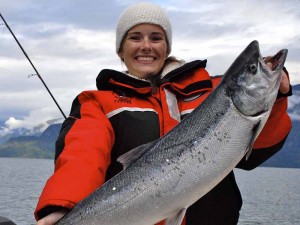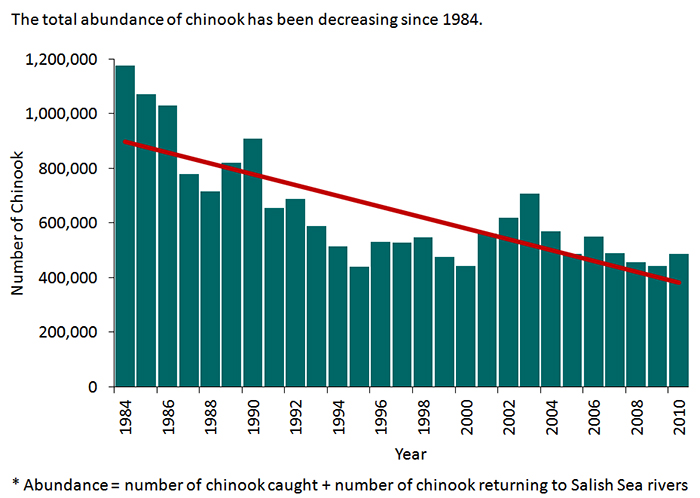
Chinook salmon are a valuable resource to the companies like Sonora Fishing Resort and the recreational fishers across BC who seek to catch them. (https://sonoraresort.com/activities)
Unfortunately their importance alone has proven insufficient in the management of chinooks. Those who rely heavily on chinook salmon are beginning to worry: over the last 30 years, chinooks in a wide range of areas have been on the decline. Numerous studies conducted over the last decade have suggested that multiple Pacific chinook stocks are in trouble, with significant reductions noted in both scientific and economic reports. Stock declines have been reported as far north as Haida Gwaii and the Skeena River near Port Rupert, and as far south as the Sacramento River in California. Owing to their importance, there have been many attempts to determine the causes. Suggestions range from poor ocean conditions resulting from climate change, to human factors such as overfishing and coastal development.

The abundance of chinook salmon in the Salish Sea since 1984 highlighting one of the many regions reporting a decline in chinook salmon abundance. (USEPA 2014)
There have been ongoing efforts to reverse this decline such as the regulation of salmon fishing and improving their habitat. One course of action that has proven popular is the implementation of hatchery programs, where sperm and eggs from wild salmon are fertilized to make juvenile salmon for the purpose of releasing them into the wild. The intention is that these hatchery salmon will survive to spawning age and contributing juveniles to wild population to restore a population that has apparently become too small to restore itself. However, the results of hatchery projects throughout the province have been mixed with some working quite well to help save chinook salmon such as the Cowichan River, and some such as the Gillard Pass Fisheries Association that have seen chinook populations in the Phillips River remain stagnant despite over 30 years of work and over 2 million chinooks released into the Phillips watershed. Extensive studies suggest that this is because salmon hatchery programs may have adverse effects on the natural populations, or may release chinook salmon before they are fully developed and ready to face harsh ocean conditions. As a result, hatchery programs may not always be effective in helping a population survive.
Click here to find out about the Gillard Pass Fisheries Association and what they are doing to help struggling chinook salmon.